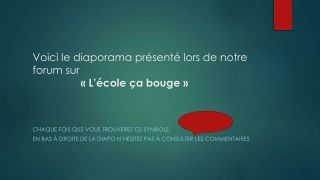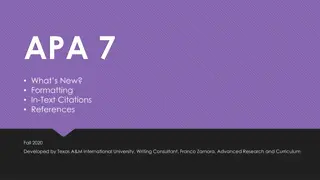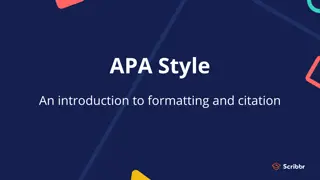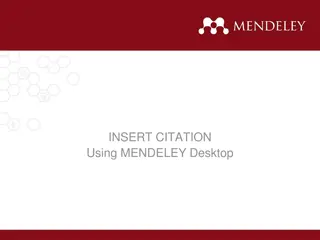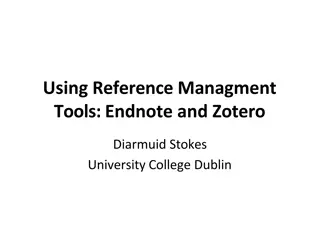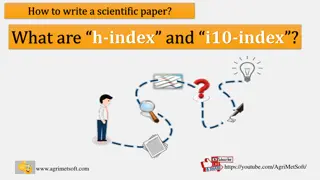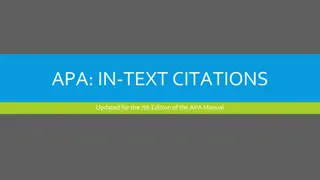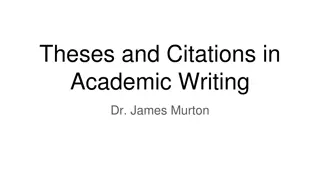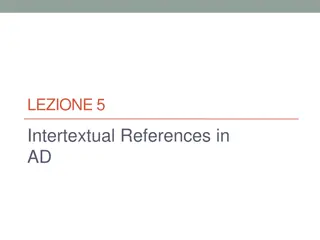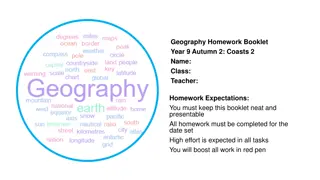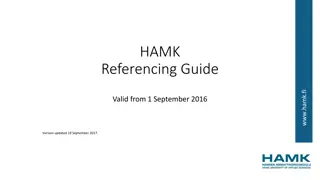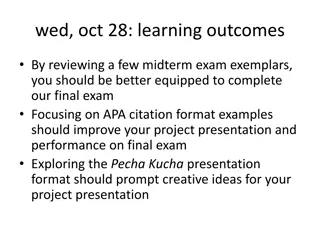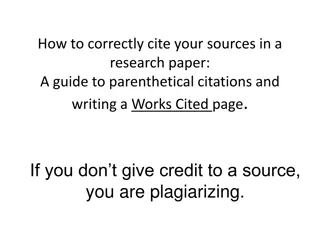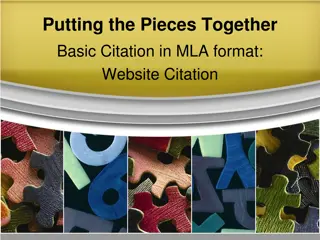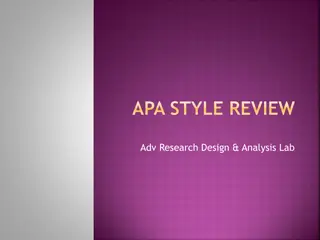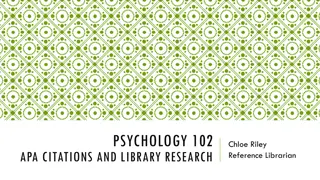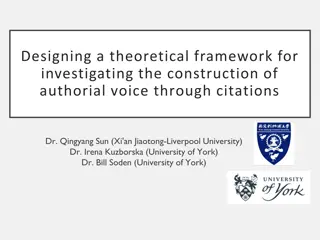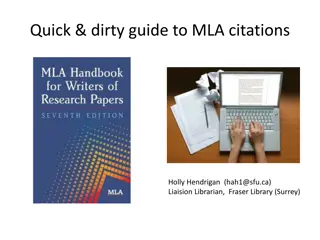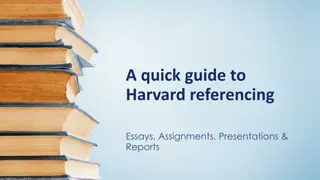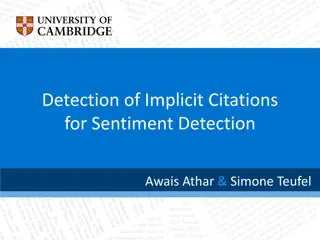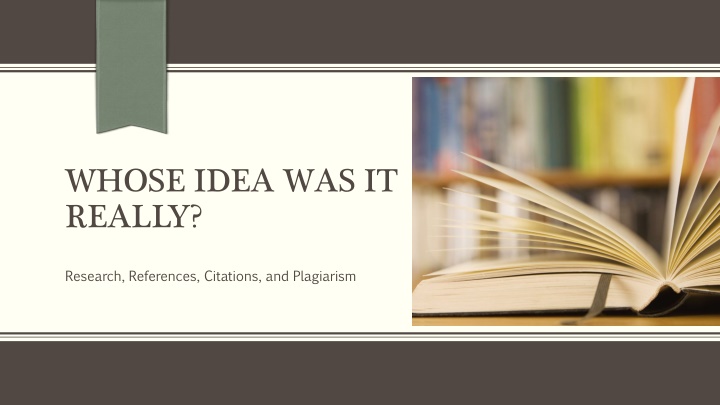
Unveiling Research: Resources, Citations, and Plagiarism
Exploring the essence of research, valid sources, references, citations, and the implications of plagiarism. Understand the types of information to seek, evaluate sources, and grasp the significance of proper citations to avoid academic misconduct.
Download Presentation

Please find below an Image/Link to download the presentation.
The content on the website is provided AS IS for your information and personal use only. It may not be sold, licensed, or shared on other websites without obtaining consent from the author. If you encounter any issues during the download, it is possible that the publisher has removed the file from their server.
You are allowed to download the files provided on this website for personal or commercial use, subject to the condition that they are used lawfully. All files are the property of their respective owners.
The content on the website is provided AS IS for your information and personal use only. It may not be sold, licensed, or shared on other websites without obtaining consent from the author.
E N D
Presentation Transcript
WHOSE IDEA WAS IT REALLY? Research, References, Citations, and Plagiarism
Research, References, Citations, and Plagiarism What is Research? What types of Sources are valid? When do we use references and why? Is a citation really needed? What happens if I plagiarize? Tools for Detecting Plagiarism Define Reference or Bibliography Define Citation Define Plagiarism MLA Formatting
What is Research? What kind of information are you looking for? What kind of information are you looking for? Do you want facts? Opinions? News reports? Research studies? Analyses? Personal reflections? History? Where would be a likely place to look? Where would be a likely place to look? Which sources are likely to be most useful to you? Libraries? The Internet? Academic periodicals? Newspapers? Government records? If, for example, you are searching for information on some current event, a reliable newspaper like the New York Times will be a useful source. Are you searching for statistics on some aspect of the U.S. population? Then, start with documents such as United States census reports. Do you want some scholarly interpretations of literature? If so, academic periodicals and books are likely to have what you re looking for. Want to know about commercial products? Will those companies have Web sites with information? Are you searching for local history? Then a county library, government office, or local newspaper archive is likely to be the most useful. How much information do you need? How much information do you need? How many sources of information are you looking for? Do you need to view both sides of the issue? https://owl.english.purdue.edu/owl/resource/552/01/
Valid Resources Primary Resource Primary Resource Interviews Secondary Resource Secondary Resource Books Journals Observations Websites (Internet) Surveys Periodicals Evaluations Multi-media Flyers Government Reports Advertising
Valid Resources (cont.) The world is full of information to be found however, not all of it is valid, useful, or accurate. Evaluating sources of information that you are considering using in your writing is an important step in any research activity. Evaluating resources is a skill. You have to know what is reliable, factual, or usable information. Is it biased information? Does it fit the need for your specific project? Clues can be found in the citation of your source. Don t waste time reading a study if the citation is an advertising agency or for-profit resource. As you read a resource Is what you are reading fact, opinion, or propaganda? A resource could be valid for one person s project, but not for another.
References Definition Definition 3: 3: Where is a Reference Located Where is a Reference Located Depending on the format of your work, references would be listed in the Bibliography, Works Cited page, or Reference page at the end of your work. something that refers: as a a : : ALLUSION, MENTION b b : : that refers a reader or consulter to another source of information (as a book or passage) something (as a sign or indication) In a presentation, you would place references in the slide or on the notes coordinating with the topic slide c c : : information consultation of sources of http://www.merriam-webster.com/dictionary/reference Used definition part 3 for our purposes
References cont. What type of information is What type of information is needed? needed? Author Author How do I format this information? How do I format this information? What format are you using? Title of Work Title of Work MLA or APA Publication date Publication date Purdue Owl https://owl.english.purdue.edu/owl/ Volume (if applies) Volume (if applies) Has your teacher given you any other instructions? Publisher Publisher Web address (if applies) Web address (if applies) Page numbers Page numbers
Citations Definition Definition 1 an official summons to appear (as before a court) Where is a citation located? Where is a citation located? A citation is located in the body of the text of your work 2 2 a a : : settled case at law an act of quoting; especially : : the citing of a previously Depending on the style you are using, will determine if you cite at the beginning, end of sentence, or end of section b b : : EXCERPT, QUOTATION 3 3 : : MENTION: as a a : : receiving an academic honor a formal statement of the achievements of a person b b : : performance of duty specific reference in a military dispatch to meritorious http://www.merriam-webster.com/dictionary/citation For our purposes, we are using definition 2b
Citations cont. What type of information is What type of information is needed? needed? Author Author How do I format this information? How do I format this information? What format are you using? Title of Work Title of Work MLA or APA Web address (if applies) Web address (if applies) Purdue Owl https://owl.english.purdue.edu/owl/ Page numbers Page numbers Has your teacher given you any other instructions?
Plagiarism Definition Definition : the act of using another person's words or ideas without giving credit to that person : the act of plagiarizing something Plagiarism Detection Plagiarism Detection Teachers and colleges use detection services to scan your work to find out how much of your work is not yours A percentage will be presented that shows how much of your work is taken from other sources http://www.merriam-webster.com/dictionary/plagiarism If you cite and reference correctly, you will not plagiarize
Plagiarism Tools Tools You and Teachers Can Use to Detect Plagiarism Errors Tools You and Teachers Can Use to Detect Plagiarism Errors Grammerly Top 8 Plagiarism Detector Tools for Teachers (article with links) https://www.grammarly.com/plagiarism http://www.educatorstechnology.com/2013 /06/top-8-plagiarism-detector-tools-for.html Paper Rater Turnitin.com http://www.paperrater.com/ http://smallseotools.com/plagiarism- checker/ Plagiarism Checker http://www.plagiarismchecker.com/ Viper Plagiarism Scanner Small SEO Tools http://www.scanmyessay.com/ http://smallseotools.com/plagiarism- checker/
Plagiarism cont. What can happen if I plagiarize? What can happen if I plagiarize? Failing grade How do I prevent plagiarism? How do I prevent plagiarism? Learn what Plagiarism is Be mindful while doing research and track resources Loss of Reputation Suspension Paraphrase Expulsion from school or college Cite Remediation courses Quote Extra Homework Reference Remember to Cite your own material if used before
The Life of Harper Lee What do we know about her? What can we learn about her? What resources can we use? How do we distinguish the information we found to see if a citation is necessary?
Information We Know Student Feedback Activity (Fill in information here)
Information We Found Student Research Activity (Utilize computers and resources to determine facts regarding the topic)
Discussion Compare what we know versus what we found
MLA Formatting MLA (Modern Language Association) style is most commonly used to write papers and cite sources within the liberal arts and humanities. This resource, updated to reflect the MLA Handbook for Writers of Research Papers (7thed.) and the MLA Style Manual and Guide to Scholarly Publishing(3rded.), offers examples for the general format of MLA research papers, in-text citations, endnotes/footnotes, and the Works Cited page. https://owl.english.purdue.edu/owl/resource/747/01/
Works Cited Page https://drive.google.com/file/d/0B1yU_yipXT0BTDdCQXRneTJKUlk/view?usp=sharing Example time stamped 1:57-2:50 on video Double Spaced Heading is Centered Hanging indent Proper formatting: Alphabetical by Authors last name then first, do not use titles such as Mr. Mrs. Etc Capitalize Titles, but not articles like to, a, and Use italics for larger works (books, journals) Use quotations for smaller works (articles, poems) URLs are no longer required, except on instructor based preference list at end of reference
In-Text Citations Basic Citation Details 4 Lines or More Differences https://drive.google.com/file/d/0B1yU_yipXT0BVjVocVhQdHFvMlk/view?usp=sharing Example time stamped 1:55-4:10 and 7:05-8:40 on video
Review Make it a habit now, while doing research, to track your resources. Use notecards, sticky notes, or a notebook to keep a list of sites, books, authors, and other important information. Plagiarism can have disastrous results for a student. As you are preparing for college, make sure you know when citations and references are required. Know what format is being used in order to cite and reference properly.

